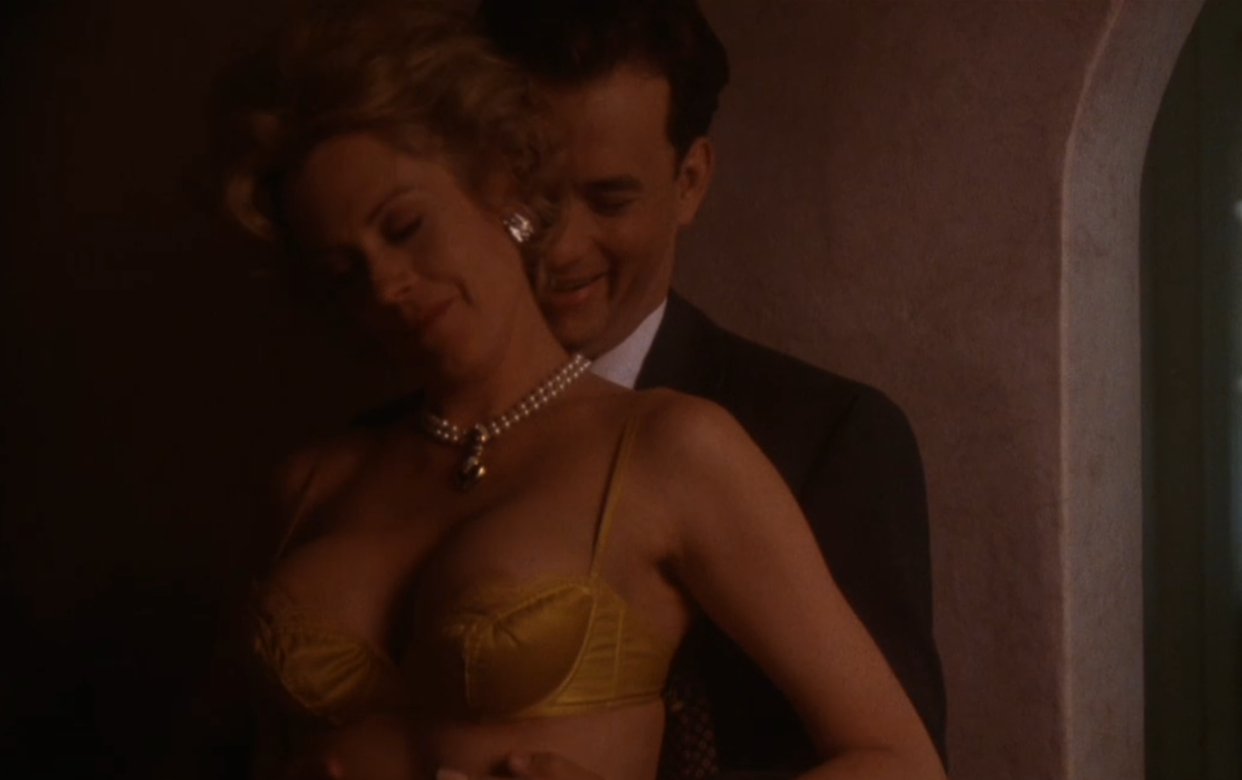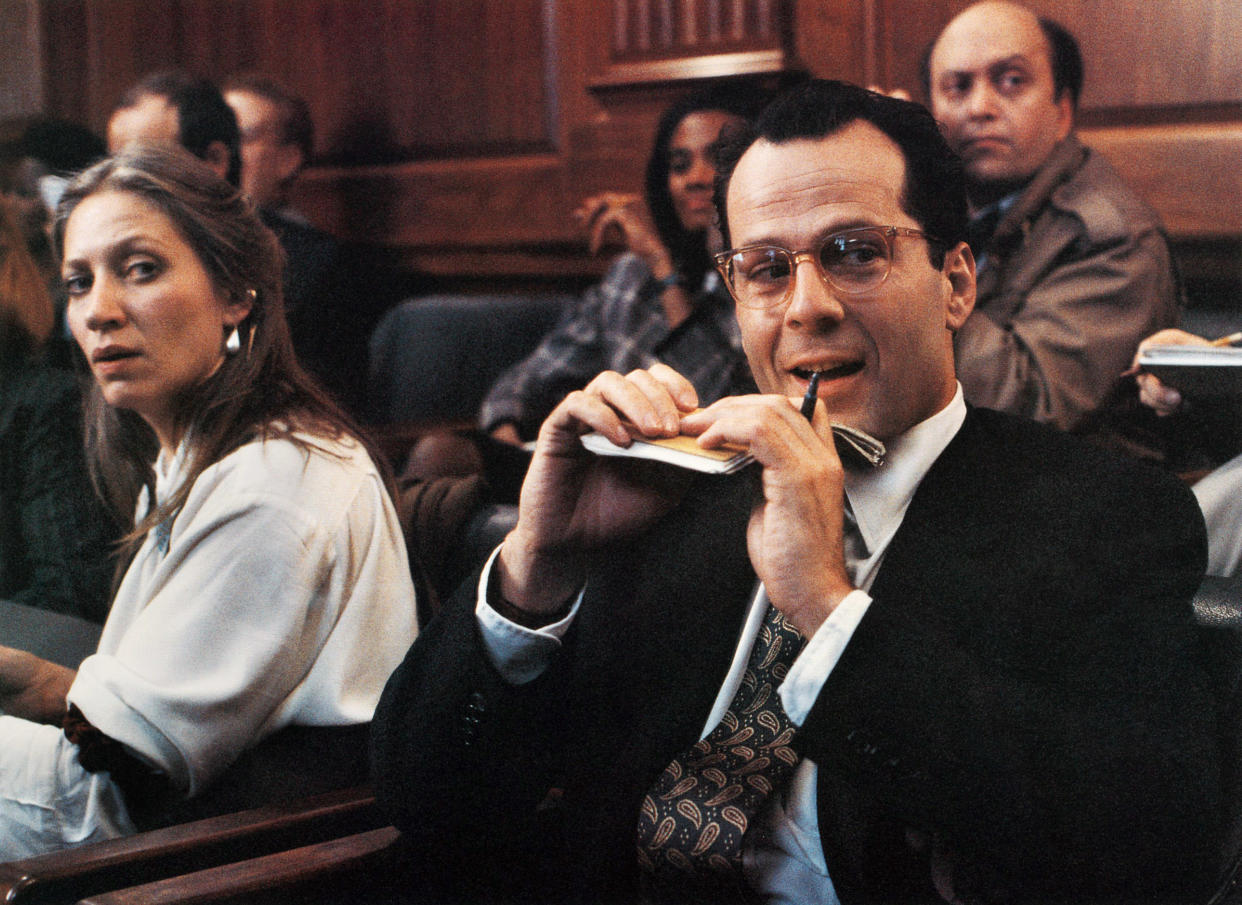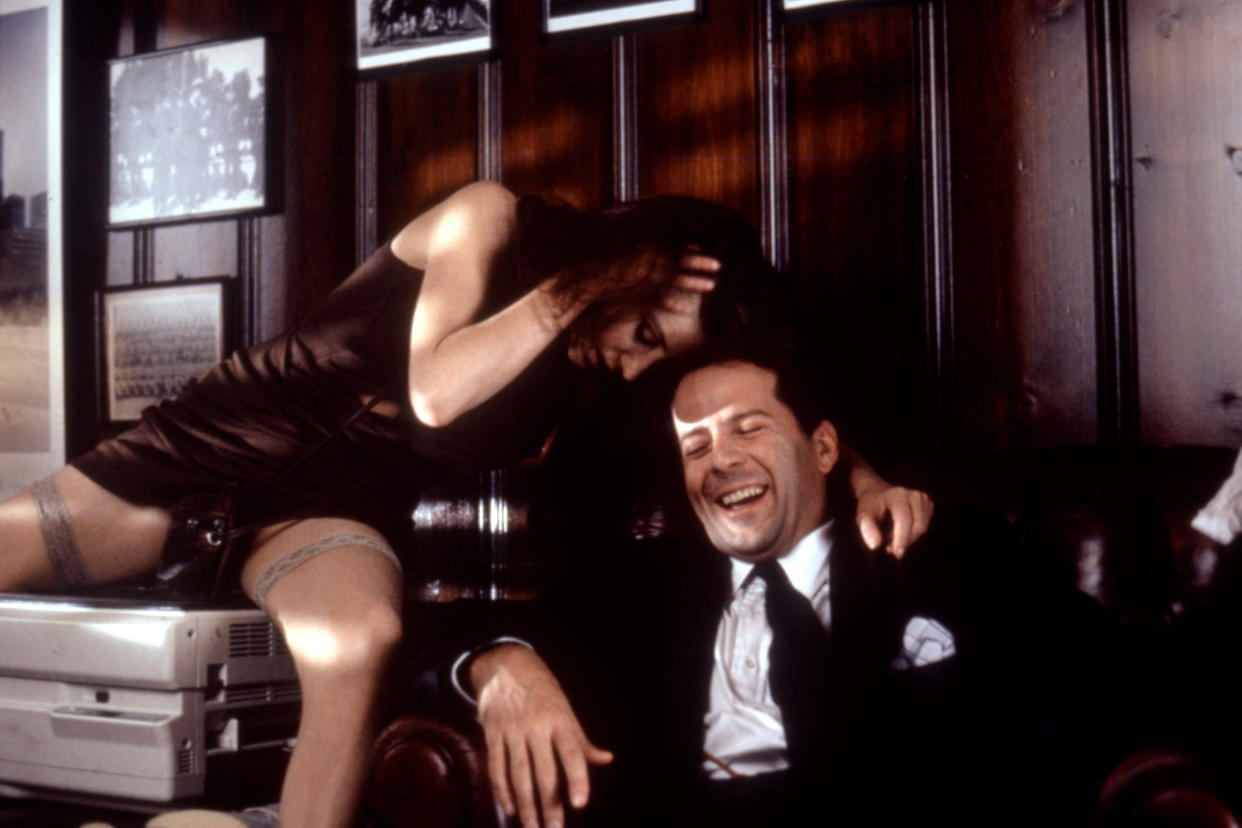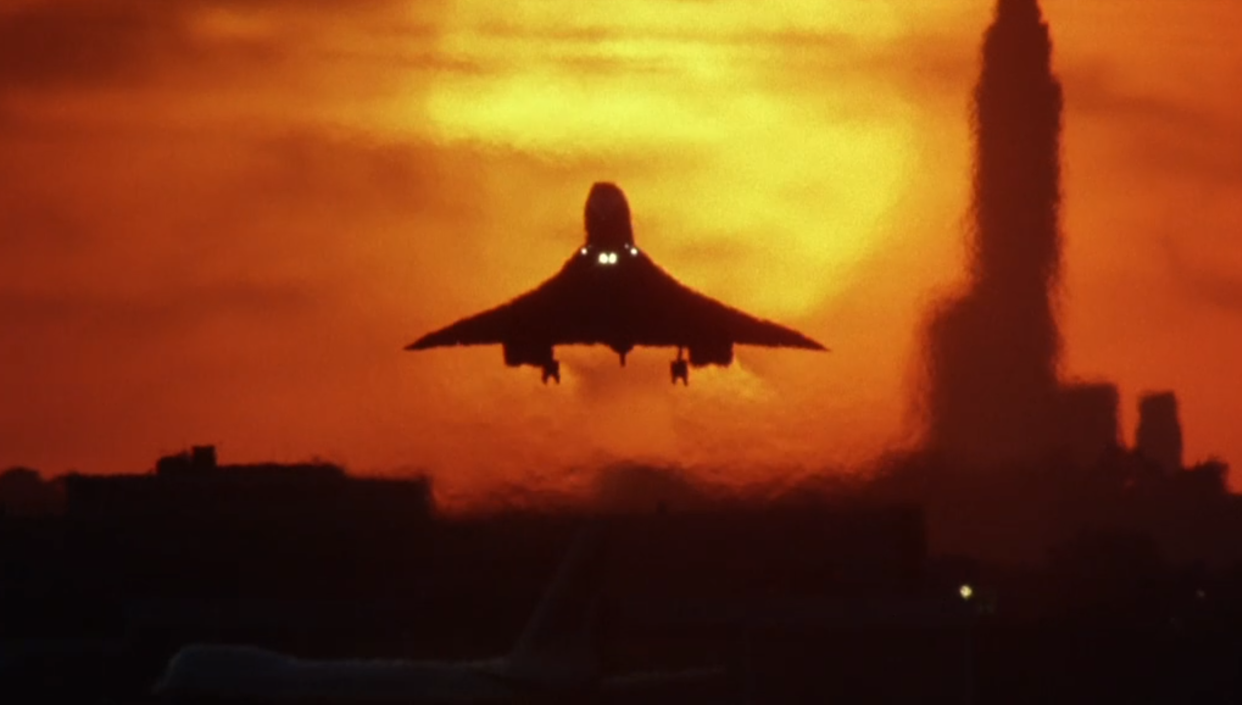'The Bonfire of the Vanities' at 30: Melanie Griffith's secret plastic surgery and other wild stories from the box office bomb
The Bonfire of the Vanities is one of those movies where the behind-the-scenes stories are better-remembered than the film itself. And that’s because those stories were collected in the blockbuster book, The Devil’s Candy: The Anatomy of a Hollywood Fiasco, journalist Julie Salamon’s all-access account of what went down on the set of Brian De Palma’s legendary bomb, based on Tom Wolfe’s wildly successful 1987 satire of upper-crust Manhattan. But no one was laughing when the Warner Bros. produced movie premiered in theaters three decades ago on Dec. 21, 1990: Ridiculed by critics and ignored by audiences, The Bonfire of the Vanities finished dead last at the box office in its opening weekend, handily surpassed by crowdpleasers like Home Aloneand Kindergarten Cop.
Published one year later in 1991, The Devil’s Candy poured additional dirt on the film’s grave. With De Palma’s permission, Salamon tracked the movie’s development from the earliest casting sessions to its ignominious departure from theaters. Her book is filled with incredible true Hollywood tales about the problem-plagued production, as well as the behavior of its three A-list stars: Tom Hanks, Bruce Willis and Melanie Griffith, who acted out Wolfe’s tale of how a white Wall Street tycoon and his mistress hit a young Black man with their car after an accidental detour into the Bronx and then flee the scene of the crime, setting off a chain of events that makes the case the talk of the town. It’s a prescient story of how personal tragedy can easily become a public farce when the media and other profiteers get involved.
According to The Devil’s Candy, Griffith in particular was a source of concern for the director and the crew. Having previously directed the actress in the 1984 cult favorite, Body Double, De Palma made the controversial call to hire her to play Maria Ruskin, the coltish paramour of so-called “Master of the Universe” Sherman McCoy (Hanks). And he recognized the risks he was assuming by bringing her aboard Bonfire. Not only did she have well-documented substance abuse issues, but she also required a lot of hand-holding and reassurance. “She’s fragile,” Salamon quotes De Palma as saying. “If anybody can handle her, I can handle her. I don’t even know what she’s going to look like. I don’t have a clue.”

According to Salamon’s account, Griffith’s looks were a topic of regular discussion for everyone involved with the film. Bonfire’s original producer, Peter Gruber, described Maria as, “the devil’s candy,” and that whoever played her had to “operate on a visceral sexual level.” There were those in the crew that felt that Griffith didn’t embody that description, including cinematographer, Vilmos Zsigmond. “She doesn’t mind those lines around her eyes? Those bags?” he remarked prior to one of her scenes, before going on to criticize her appearance in the 1988 hit Working Girl as well.
Others on the largely male crew were also unsparing when talking about Griffith on set — an unfortunate reminder how the industry felt permitted to operate prior to the rise of the #MeToo movement. But the movie’s costume designer, Ann Roth, rose to her defense after one such exchange. “My feeling is she looks great,” she told Salamon. “The woman is thirty-three years old, and she looks one thousand times better than she looked in Working Girl.... Brian has his own idea of what’s sexy.”

While De Palma tried to shield his leading lady from overhearing any critiques of her performance or her appearance, Griffith was perhaps aware that she was being closely watched. In one of The Devil’s Candy’s most famous moments, Salamon reveals that the actress returned from a three-week break during which she had prominent breast enhancement surgery — information that she kept secret until she arrived to shoot the movie’s more intimate moments between Maria and Sherman. The news swept around the set after Griffith’s first wardrobe fitting, with many speculating whether she had it done for the movie... or for her husband, Don Johnson. (At the time, the pair had recently gotten remarried after marrying and divorcing in 1976. They divorced for a second time in 1996.)
Salamon’s book describes Griffith as unapologetically calling peoples’ attention to her new physique, at one point even pressing her cleavage into De Palma’s face. “How do they feel?” she asked him, as the director gently tried to coax her into focusing on the scene they’re about to shoot. Meanwhile, Warner Bros. executive Lucy Fisher offered a more forgiving assessment of the star’s extreme makeover. “She had a baby, give her a break,” she told Salamon. “They look great. Now they’re back to where they were before.”
To mark the 30th anniversary of The Bonfire of the Vanities, here are some other eyebrow-raising making-of anecdotes from The Devil’s Candy, from a charged audition between Hanks and a young Uma Thurman to an out-of-his-depth Willis throwing his proverbial weight around on set.
When Tom Met Uma

Before De Palma picked Griffith to play Maria, he very nearly cast a young Uma Thurman in the pivotal role. At the time, the then-19-year-old actress was coming off of scene-stealing appearances in Terry Gilliam’s The Adventures of Baron Munchausen and Stephen Frears’s Dangerous Liaisons when she was asked to audition opposite Hanks for Bonfire. While the actor was skeptical about her youth, De Palma insisted that she’d fit the mold of the “devil’s candy” that Gruber talked about. “Uma’s so beautiful. Like Veronica Lake,” he remarked.
As Salamon recounts, Thurman showed up for the audition looking like a classic Golden Age movie star. De Palma had the two actors perform a scene where Maria seduces Sherman after their accident. Dressed in a revealing outfit, the actress apparently left her normally unflappable co-star — who had recently married his second wife, Rita Wilson — a little hot and bothered. “When she walked in here I was stunned,” Hanks told De Palma after the audition. “She’s quite attractive, almost erotic. She certainly had a sense of play.”
At that point, Thurman seemed to have the role on lock, and De Palma arranged plans for a formal screen test with the pair. But days later, Hanks experienced a change of heart and dragged his heels about acting alongside her again. According to Salamon, he felt that her audition was more suited to a “high school play” as opposed to what Griffith could potentially bring to the role. (Michelle Pfeiffer and Lena Olin were also considered for the part prior to Griffith being cast.)
“I just can’t act with Uma,” he’s quoted as saying, and the book implies that he proceeded to demonstrate that by delivering a sub-par screen test. Rejected by Bonfire, Thurman went on to find stardom in hits like Pulp Fiction and Gattaca. To this day, she and Hanks have yet to act opposite alongside each other onscreen.
Bruce needed a major re-write

As critics cited at the time, one of the chief problems with Bonfire is that all three of the leads seem miscast. De Palma recognized that during production when it came to Willis, who nabbed the plum part of Peter Fallow, a disgraced, drunken journalist whose career is resurrected by the McCoy case. Written as a British reporter in Wolfe’s book, the studio originally considered casting Monty Python funnyman John Cleese before approaching Jack Nicholson. But then Willis — who vaulted to A-List superstardom following the release of the Christmas classic Die Hard — made his interest in the movie known, and De Palma literally couldn’t turn him down... mainly because the studio wouldn’t let him.
But maybe he should have. From the beginning of production, Willis struggled with the role and De Palma and screenwriter Michael Cristofer had to re-tailor the script on the fly to accommodate the actor’s limitations. Salamon’s account suggests that he wasn’t the easiest guy to get along with on set either. Willis was followed everywhere by personal security guards, and avoided interacting with the crew or the bystanders who gathered to watch the production on the streets of New York. When the pacing of one sequence displeased him, he tried to “direct” the action in place of the actual director — requiring De Palma to take the actor aside for a heart-to-heart.
Willis even managed to needle Hanks: Salamon recounts a moment on set where the actors were sitting alongside each other in between takes, with Willis going on at length about his experiences on Moonlighting — the TV series that gave him his big break. Midway through his co-star’s monologue, Hanks looked at the video monitor that showed Willis’s face in close-up. “Big s***-eating grin I see there on the monitor,” the actor said, cheekily. “Yup, there it is,” he repeated moments later. Both times, Willis didn’t pick up on the joke. Maybe it sunk in later, though — he and Hanks notably haven’t worked together again in the three decades since Bonfire.
How not to use office equipment

Griffith wasn’t the only Bonfire actress who was subjected to an uncomfortable workplace environment. One misconceived scene that comes midway through the movie required Beth Broderick — who plays Maria’s ex-pal and one of Fallow’s sources Caroline Heftshank — to remove her underwear and then mount a photocopier to make copies of her private parts for Fallow to give to her former friend. The sequence is intended to be comic, but it doesn’t come across that way in the film... and it certainly didn’t feel that way on set.
Salamon was present for the filming of that scene, and her uncomfortable descriptions of it in The Devil’s Candy provide yet another example of Hollywood’s unfortunate history of failing to make actresses feel safe and secure on set. At the time, Broderick was dating De Palma, who promised her that none of the nude photocopies would appear onscreen in the film. But she also felt that she wasn’t in the position to say no to the scene, lest it hurt her career.
“If you look at the roles for women that are available, the only way I can be interpreted is based on what I look like,” she told Salamon at the time. “I’m built a certain way and that’s the way it goes. But I’m also very intelligent and very quick, and capable of doing the things women are never given the chance to do. What you hope and bank on is that with your training and your other qualities you’ll get a chance to exercise them if you do this first.”
Shooting the photocopier scene took nine hours, and Salamon describes Broderick as having bruises on her thighs and buttocks by the time the ordeal was over. “My basic goal was to try and keep from crying,” she said afterwards. “It’s very difficult, you’re very embarrassed. It’s not like you agree to do this and you have no feelings about it. I agreed to do it so I have to give it up. All I can do is do what I have to do to get it over with.” (Broderick and De Palma later split up after production wrapped.)
A one-in-$80,000 shot

If nothing else, The Bonfire of the Vanities does contain one of the most impressive — and most expensive — single shots in cinema history: a plane touching down at New York’s John F. Kennedy Airport with the setting sun behind it. Cristofer wrote a simple version of the scene into the screenplay, but it was second unit director Eric Schwab who brought it to glorious life on the big screen. Schwab himself volunteered for the seemingly thankless assignment, and made a $100 bet with De Palma that he’d come up with a shot so great, it would have to end up in the movie.
Schwab’s first directorial decision was that the famed Concorde turbojet — which flew between Europe and America from 1969 until 2003 — was the only aircraft impressive enough to execute the shot he had in mind: an image of a plane touching down at the exact moment that the setting sun and the Empire State Building lined up in the same frame. After an enormous amount of preparation that included coordinating with the Concorde’s pilots and studying almanacs to determine the most favorable weather conditions, he eventually decided on June 12 as the date for his grand experiment.
That afternoon, he and his crew set up five cameras on the JFK tarmac preparing to film the arrival of the inbound Concorde flight. Each camera had only one role of film, and there wouldn’t be any second chances to get the shot. The plane took off 20 minutes prior to sunset, and for several frightening moments, Schwab was convinced they wouldn’t hit the runway at the designated time. At one point, his nerves got the better of him and he started filming a different plane as it came in for a landing.
But then, precisely on schedule, the Concorde descended, the sun and the Empire State Building were in perfect alignment and it was all captured on film. The final price tag? $80,000. But the feeling of having pulled off an impossible shot, and winning the $100 off of De Palma? Priceless.
The Bonfire of the Vanities is available to rent or purchase on Amazon.
Read more from Yahoo Entertainment:
